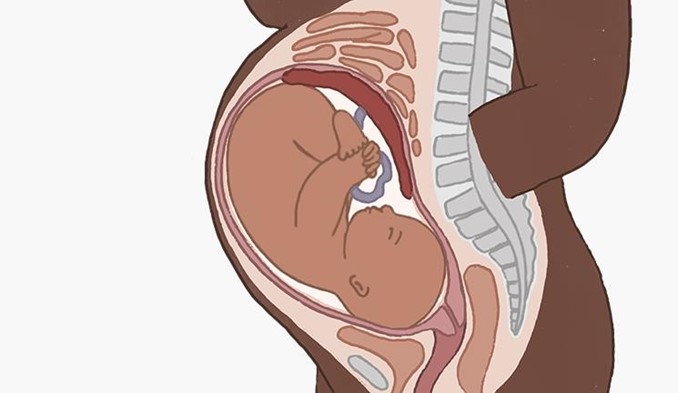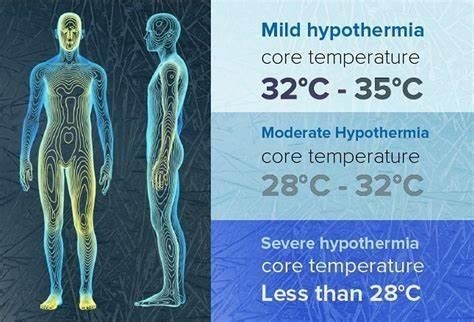A nurse in a hospital is caring for a client who is at 38 weeks of gestation and has a large amount of painless, bright red vaginal bleeding. The client is placed on a fetal monitor indicating a regular fetal heart rate of 138/min and no uterine contractions. The client's vital signs are: blood pressure 98/52 mm Hg, heart rate 118/min, respiratory rate 24/min, and temperature 36.4°C (97.6°F). Which of the following is the priority nursing action?
Insert an indwelling urinary catheter.
Prepare the abdominal and perineal areas.
Witness the signature for informed consent for surgery.
Initiate IV access.
The Correct Answer is D
Choice a) Insert an indwelling urinary catheter is incorrect because this is not a priority action for a client who has a large amount of painless, bright red vaginal bleeding. This type of bleeding is suggestive of placenta previa, which is a condition where the placenta covers part or all of the cervix, preventing normal delivery. Inserting an indwelling urinary catheter can cause trauma to the cervix or the placenta, which can worsen the bleeding and endanger the mother and the fetus. Therefore, this action should be avoided unless absolutely necessary.
Choice b) Prepare the abdominal and perineal areas is incorrect because this is not a priority action for a client who has a large amount of painless, bright red vaginal bleeding. This type of bleeding is suggestive of placenta previa, which is a condition where the placenta covers part or all of the cervix, preventing normal delivery. Preparing the abdominal and perineal areas can be done before performing a cesarean section, which is usually the preferred mode of delivery for placenta previa. However, this action should be done after stabilizing the client's condition and obtaining informed consent for surgery.
Choice c) Witness the signature for informed consent for surgery is incorrect because this is not a priority action for a client who has a large amount of painless, bright red vaginal bleeding. This type of bleeding is suggestive of placenta previa, which is a condition where the placenta covers part or all of the cervix, preventing normal delivery.
Witnessing the signature for informed consent for surgery can be done before performing a cesarean section, which is usually the preferred mode of delivery for placenta previa. However, this action should be done after stabilizing the client's condition and explaining the risks and benefits of surgery.
Choice d) Initiate IV access is correct because this is the priority action for a client who has a large amount of painless, bright red vaginal bleeding. This type of bleeding is suggestive of placenta previa, which is a condition where the placenta covers part or all of the cervix, preventing normal delivery. Initiating IV access can help to restore fluid volume, prevent hypovolemic shock, administer medications such as oxytocin or blood products if needed, and prepare for emergency cesarean section if indicated. Therefore, this action should be done as soon as possible to save the life of the mother and the fetus.

Nursing Test Bank
Naxlex Comprehensive Predictor Exams
Related Questions
Correct Answer is D
Explanation
Choice A) Decreased metabolic rate is incorrect because this is not a result of hypothermia in the newborn, but rather a cause of it. Metabolic rate is the speed at which the body uses energy to perform its functions. Newborns have a high metabolic rate, which helps them to maintain a normal body temperature of 36.5°C to 37.5°C (97.7°F to 99.5°F). However, some factors can lower the metabolic rate of newborns, such as prematurity, low birth weight, infection, or hypoglycemia. A low metabolic rate can make the newborn more susceptible to heat loss and hypothermia, which is a condition that occurs when the body temperature drops below 36°C (96.8°F). Therefore, this response is inaccurate and misleading.
Choice B) Decreased oxygen demands is incorrect because this is not a result of hypothermia in the newborn, but rather a consequence of it. Oxygen demand is the amount of oxygen that the body needs to function properly.
Newborns have a high oxygen demand, which helps them to support their growth and development. However, some factors can decrease the oxygen demand of newborns, such as hypothermia, sedation, or asphyxia. A low oxygen demand can impair the oxygen delivery and utilization by the tissues and organs, leading to hypoxia, acidosis, or organ failure. Therefore, this response is irrelevant and inaccurate.
Choice C) Shivering to generate heat is incorrect because this is not a result of hypothermia in the newborn, but rather a mechanism that is absent in them. Shivering is an involuntary contraction of the muscles that produces heat and raises the body temperature. It is a common response to cold exposure in adults and older children, but not in newborns. Newborns do not have the ability to shiver, as their muscles are immature and lack glycogen stores.
Instead, they rely on other methods to generate heat, such as non-shivering thermogenesis, which involves burning brown fat in certain areas of the body. Therefore, this response is irrelevant and inaccurate.
Choice D) Increased glucose demands is correct because this is a result of hypothermia in the newborn that can cause complications. Glucose demand is the amount of glucose that the body needs to produce energy and maintain its functions. Newborns have a high glucose demand, which helps them to support their metabolic rate and thermoregulation. However, some factors can increase the glucose demand of newborns, such as hypothermia, stress, or infection. A high glucose demand can deplete the glucose stores and cause hypoglycemia, which is a low level of glucose in the blood that can lead to seizures, brain damage, or death. Therefore, this response is clear and accurate.

Correct Answer is D
Explanation
Choice a) Check the baby's diaper is incorrect because this is not a priority action for a baby who is grunting in the neonatal nursery. Grunting is a sign of respiratory distress, which means that the baby is having difficulty breathing and is trying to keep air in the lungs by making a low-pitched sound with each expiration. Checking the baby's diaper may be part of routine care, but it does not address the underlying cause of the grunting or improve the baby's oxygenation. Therefore, this action should be done after assessing and treating the baby's respiratory status.
Choice b) Place a pacifier in the baby's mouth is incorrect because this is not an appropriate action for a baby who is grunting in the neonatal nursery. Grunting is a sign of respiratory distress, which means that the baby is having difficulty breathing and is trying to keep air in the lungs by making a low-pitched sound with each expiration. Placing a pacifier in the baby's mouth may interfere with the baby's breathing and worsen the grunting, as it can obstruct the airway, increase the work of breathing, or cause aspiration. Therefore, this action should be avoided or used with caution for babies who are grunting.
Choice c) Have the mother feed the baby is incorrect because this is not a safe action for a baby who is grunting in the neonatal nursery. Grunting is a sign of respiratory distress, which means that the baby is having difficulty breathing and is trying to keep air in the lungs by making a low-pitched sound with each expiration. Having the mother feed the baby may increase the risk of choking or aspiration, as the baby may not be able to coordinate sucking, swallowing, and breathing. Therefore, this action should be delayed or modified until the baby's respiratory status improves.
Choice d) Assess the respiratory rate is correct because this is the most important action for a baby who is grunting in the neonatal nursery. Grunting is a sign of respiratory distress, which means that the baby is having difficulty breathing and is trying to keep air in the lungs by making a low-pitched sound with each expiration. Assessing the respiratory rate can help to determine the severity and cause of the respiratory distress, as well as guide further interventions such as oxygen therapy, suctioning, or medication. The normal respiratory rate for a newborn ranges from 30 to 60 breaths per minute, and it may vary with sleep or activity. A respiratory rate above 60 breaths per minute or below 30 breaths per minute indicates abnormality and requires immediate attention. Therefore, this action should be done as soon as possible for babies who are grunting.
Whether you are a student looking to ace your exams or a practicing nurse seeking to enhance your expertise , our nursing education contents will empower you with the confidence and competence to make a difference in the lives of patients and become a respected leader in the healthcare field.
Visit Naxlex, invest in your future and unlock endless possibilities with our unparalleled nursing education contents today
Report Wrong Answer on the Current Question
Do you disagree with the answer? If yes, what is your expected answer? Explain.
Kindly be descriptive with the issue you are facing.
